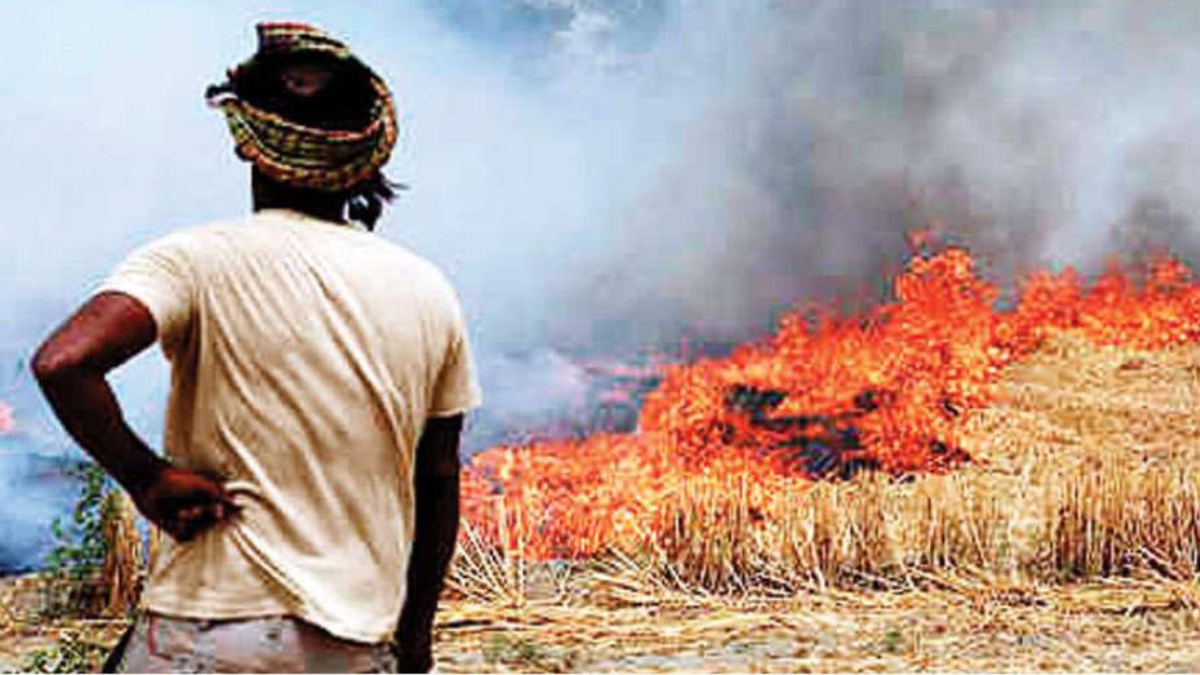Parali or stubble burning and its unintended adverse health consequences for crores of people living in the NCR and other areas demonstrate the failure of the states to implement the rule of the law and also its inability to find innovative solutions faced by farmers. Nobody can be allowed to play with the health of others. Political compulsions cannot be an excuse to jeopardise health of citizens. It is here that we are failing as a law governed society.
Farmers would burn the stubble almost during the same period since they need to show Rabi crop immediately after the harvest and it appears there is no solution. The State would look the other way since implementing the law would be counter-productive and also the State has become a hapless victim to inefficiency and corruption. It ends up becoming a bystander. While farmers may show helplessness, the State cannot become a mute spectator. It must provide solutions.
Arvind Kejriwal has accepted his failure in controlling stubble burning in Punjab which is the major cause for Delhi getting choked due to very poor to severe AQI (Air Quality Index). Along with Punjab Chief Minister Bhagwant Singh Mann, Kejriwal said that the situation would be under control from November next. This means, this year nothing can be done from their side to mitigate the suffering.
The Aam Aadmi Party government has been there in Punjab for the last eight months. This was enough time to create awareness among farmers and give them the wherewithal to provide alternatives to stubble burning. In his typical style of cheap politics, Kejriwal said don’t blame the farmers.
Who is blaming farmers? Everyone is blaming Kejriwal because he has failed in the very first test for which he should have been better prepared. He knew about the issue very well. Way back in 2020, he had spoken about a liquid solution that would solve the problem of stubble burning in Delhi’s farm land running into 800 acres. Based on such a postulation, he had promised to rid Punjab of stubble burning if voted to power. He had blamed the Punjab government for not providing similar solutions.
So, why should people not ask him what was the Punjab government doing all these months. He wants Prime Minister Narendra Modi to find out the solutions, but take the credit for himself, the way he did with the Central government run Pusa Agricultural Institute in Delhi. When will he grow up and take responsibility and find solutions?
With the massive support he got in Punjab, it would not have been tough for him and the Mann government to create awareness about stubble burning. It is clear that he did not do enough. Mann said the parali issue could not be tackled since there was bumper crop. But the state is capable of making such assessment during the time of sowing and prepare for post-harvest operations.
In his attempt to politicise every issue and to reposition the AAP as a national party, Kejriwal has failed to provide good governance and has acquired the habit of playing to the gallery. The role of political leadership is to lead and find solutions and now show helplessness. The situation would have been different if adequate care was given to this issue that crops every year.
If such leaders want to learn, they already have a role model in Modi. As chief minister of Gujarat, he was not deterred by farmers’ agitation when he was trying to restructure the power distribution system. He told farmers that the option was free power for a few hours since the state could not afford, or 24 hours power supply, but on a reasonable rate. Farmers opted for the latter and 24-hour power added to their profitability even after they paid power bills. Leaders must show the way and not bury their heads in sand at sighting resistance.
The other example is Haryana which has a similar cropping pattern and faced same crisis on the issue of stubble burning. The state must be credited with tackling the issue on war footing and showing the will to provide solution. It took into account that the farmers burn stubble not out of choice, but compulsions. They are also aware citizens of our society. Reports say that Haryana has reduced the menace of stubble burning by close to 55% in the last six years. It is down by 30% over the last year.
The state government has been giving incentives for not burning stubble and imposing fines on those who burn. It has also made available farm tools though private operators who use bailers and sell the stubble in market to customers such as cardboard factories, biomass plants, boilers and ethanol plants. The farmers don’t complain since most of them are happy with the government’s efforts.
If stubble burning is reducing Delhi’s air from good to severe category where breathing is difficult and may lead to asthmatic diseases, is it not reason enough that our leaders should sit together and decide on solutions. It is true that pushing forward the sowing and harvesting period by a few weeks has led to desperation in farmers for getting the field ready in a week’s time for the Rabi crop. Their easiest route is burning of the stubble.
Introduction of machine in harvesting has also multiplied the problems that was much less in intensity when it used to be done manually. Labourers used to cut the stubble nearer to the roots, whereas machines do it just below the grains leaving long stubbles. This makes burning easier and leads to massive pollution.
Policy makers have to take a comprehensive view of the situation. Water table is drying since it takes close to 3,000-5,000 litres of water to produce 1 kg of rice. This puts a question mark on water sustainability in the long run. At a time when we have focussed on more crop each drop, can we afford to have a system that is non-sustainable?
It calls for government’s intervention to change the cropping pattern and use the natural resources in its local setting. We must not forget that only about 17% water is available for domestic and industrial uses and 83% is used in agriculture. Of this, 25 % of water is used to produce rice.
The government has to look into water table issues, availability of rain water, use of agricultural tools to harvest and ways to empower farmers to take care of stubble without choking Delhi and other cities. Hectic construction activities in the capital city add to the woes. Order to stop construction during this time is ignored and corruption rules the roost. People don’t complain out of fear since this trade is controlled locally by mafias who have links with deep state in police and administration.
Checking vehicular pollution can also help mitigate some suffering. But with the use of modern technology in cars and automobiles, not much pollution is added. Road worthiness of vehicles rather than the age of the vehicle should be the guiding principle. By insisting on age of the vehicle, we are promoting throw-away culture of the West. All of us would recall the emotional value of old car that the family associated with.

















